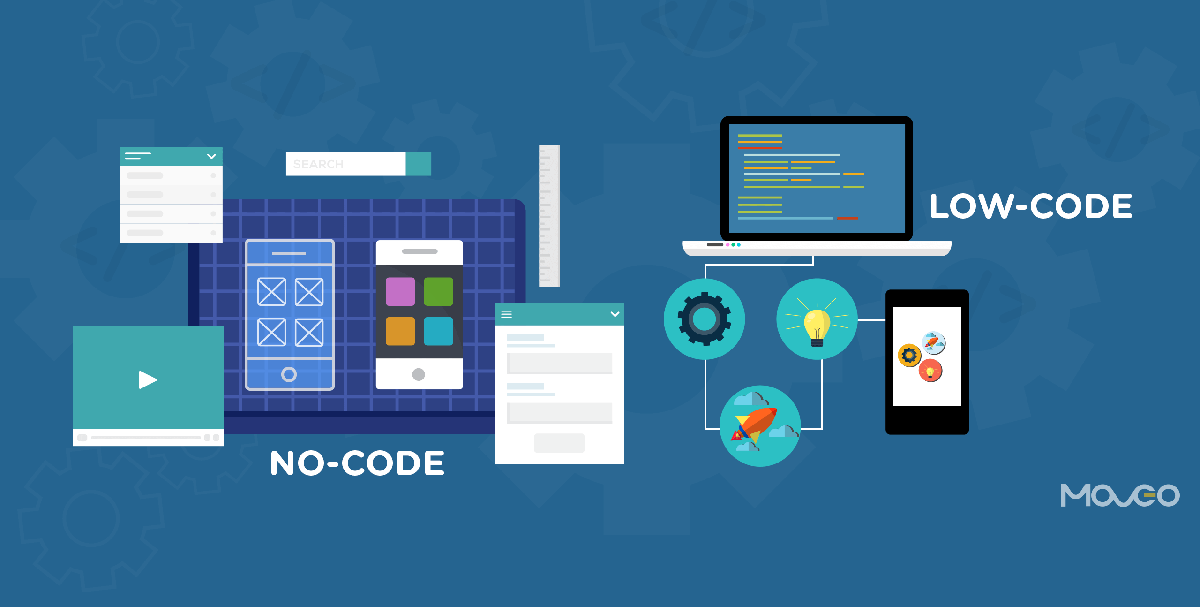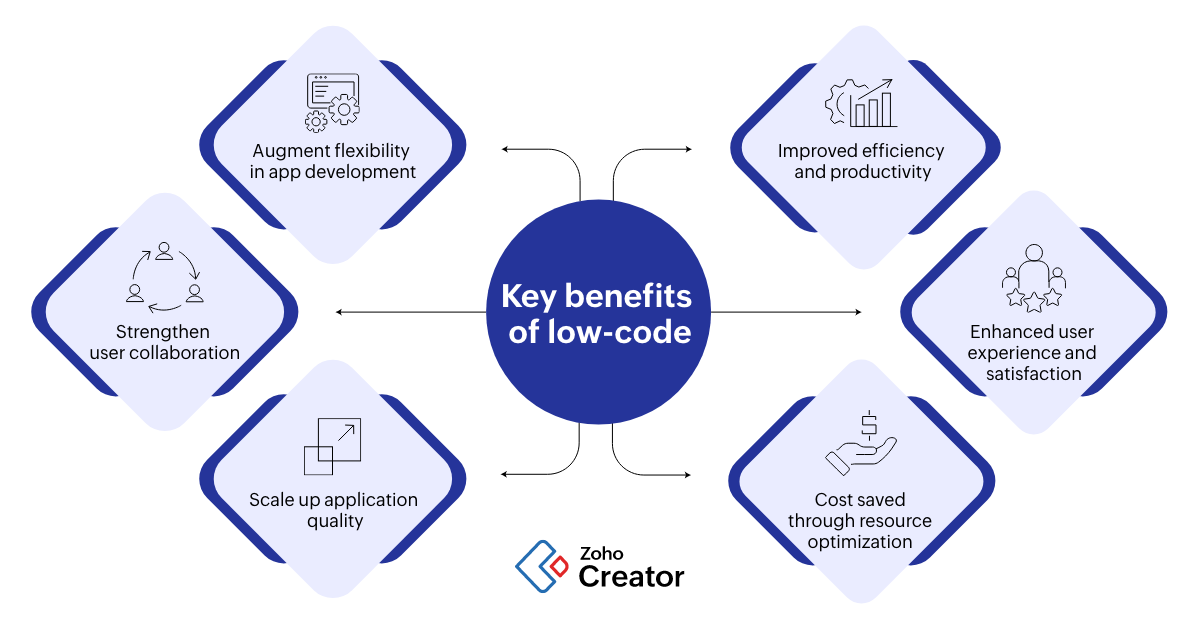Best Facts On Deciding On Low-code platforms for application development
Best Facts On Deciding On Low-code platforms for application development
Blog Article
Benefits Of Developing Applications Using Low-Code In Terms Of Speed
Visual Development Environment (VDE):
Drag-and-Drop Interfaces: Low-code platforms provide visual tools for designing applications. Drag-and-drop elements allow developers to build apps quickly without having to write code.
Many low-code platforms have pre-built templates and components that permit developers to quickly build prototypes of their applications and create them without having to start from scratch.
Reduced Coding Requirements:
Automated Generated Code: Lowcode platforms create the underlying code based off the visual models created developers. This eliminates the requirement to write code manually and speed up the development process.
Reusable component: Developers can make use of the same components in various projects. This reduces time spent writing code and testing.
Collaboration is made easier:
Low-code platform tools usually contain versions control, testing, or deployment. This enables the seamless communication between teams.
Citizen Development (Citizen Development) Developers and users of business applications are able to participate in application development by making use of intuitive interfaces. This reduces the burden caused by a lack of accessibility of professional developers.
Rapid Iteration and Prototyping
Fast prototyping: Developers can create prototypes quickly to validate ideas and gather feedback. This results in a less time spent on iterations.
Easy Modifications. The visual nature of low-code development allows users to update and modify their apps.
Pre-built Integrations:
API Integrations: Low code platforms typically come with connectors for popular APIs and services. This can reduce the time needed to connect external systems.
Data Integration: The tools built into the software simplify and accelerate the process of connecting databases, data sources, and applications.
Deployment Scaling
One-Click Deployment: Many low-code platforms provide one-click deployment options, significantly cutting down on the time and effort needed to deploy applications.
Cloud-based Platforms: Cloud-based platforms which are low-code allow for the management of infrastructure and scaling, so developers can concentrate on the logic and functionality of applications instead of deployment logistics.
Overall, low-code development has the advantage in terms speed due to its capacity to automate and simplify many elements of development. This allows for quicker app delivery and a simpler adaptation to changing needs. View the top rated Low-code Platform for application development info for website examples including sso azure, software for app development, sso azure, cross platform mobile development, develop cross platform mobile app, cross platform mobile dev, rapid action development, azure sql databases, mobile app development platforms, cross platform app dev and more.
Flexibility And Scalability Are Two Advantages Of Low Code Application Development
Low-code development offers numerous advantages in regards to scalability and flexibility, which is crucial to creating applications that are able to grow and adapt with changing business requirements. Here are some of the principal benefits: Rapid scaling:
Cloud-based deployment : Many low-code platforms are cloud based. This lets applications expand seamlessly with the cloud infrastructure. This lets businesses handle more workloads without having to worry about the management of servers.
Auto-Scaling Features: Built-in functions that automatically scale resources in order to meet demand can ensure consistent performance without manual input during peak hours.
Flexible Architecture:
Modular Design: Low-code platforms encourage modularization of applications, allowing components to be independently designed, tested and scalable. Modularity allows for greater flexibility, and it is easier to update specific parts of an app without having to alter the entire system.
Microservices Integration : In support of microservices, applications can be created using loosely-coupled service to enhance the flexibility and scalability.
Customizable Solution:
Extensibility : Low-code platforms permit developers to enhance functions beyond what they are able to provide. Developers can meet their unique business requirements without any limitations.
Third-Party Integrations: The incorporation of APIs, third-party services or other services enables companies to enhance the capabilities of their applications by adding additional functionalities.
Agile Development and Deployment
Continuous Delivery and Deployment : Low-code platforms support agile methods which allow continuous integration, continuous delivery (CI/CD). This enables rapid deployment of updates and the introduction of new features, which allows applications to develop quickly as a result of user feedback and changes in the market.
Iterative development Iterative development: Low-code development is iterative meaning that applications can be scaled up and developed incrementally. This reduces the risk of major changes and allows an controlled growth.
Resource Optimization
Efficient Resource Management: Low-code systems assist optimize resource usage by providing tools for monitoring and managing the performance of applications. This ensures that resources are used efficiently, and can be can be scaled up or down in accordance with the needs of the moment.
Load Balancing: The integrated load balancing feature distributes workloads evenly among servers. This improves the system's ability to handle large volumes of traffic, and ensures the same performance.
Global Reach
Multi-Region Availability: Lowcode platforms allow the deployment of applications across different regions. Businesses can offer users high-speed, low-latency global access. This is crucial for applications that serve an international audience.
Localization Support for localization integrated into the software, allowing for applications to be easily modified to accommodate different languages or regional demands. This increases flexibility for various markets.
Maintenance and updates
Simple Maintenance : Low-code programs' visual and modular nature makes maintenance easier. This lets bugs and updates to be made quickly, with no lengthy downtime.
Version Control Systems for Controlling Versions can help you manage updates, rollbacks and other changes. They will make sure that they are released without risk and the previous version can be restored if necessary.
Cost Efficiency:
Reduced development costs: Low-code systems enable a reduction of the development costs by removing the need to code extensively. This lets applications be scalable without an increase in the development cost or effort.
Pay-as-you-go models Numerous platforms that are low-code provide flexible pricing options, such a pay-as-you go model that aligns prices and usage with actual growth.
Overall, low-code app development gives businesses the flexibility and scalability they require to create robust and flexible applications. These platforms can quickly adapt to the changing needs and make the most efficient use of resources, and constantly improve, allowing applications and companies alike to grow and expand. View the recommended Legacy application modernization with Low-code for blog tips including rapid application design, azure sql databases, cross platform mobile app development, application modernization software, develop cross platform mobile app, build with docker, develop web application, app platforms, rapid applications, app modernisation and more.
Benefits Of Low-Code Application Development With Respect To Limitations And Customization
The low-code approach offers an approach that is balanced and permits extensive customization, and also addresses the limitations. Here are a few of the main benefits.
: .
Low-code development platforms are easy to use due to the fact that they come with pre-built components, templates, and various other tools. They also allow for faster deployment of complicated applications.
Many platforms have wizards and guided workflows to aid developers in understanding complex processes. These tools decrease the risk of mistakes and help ensure uniformity.
Scalability solutions:
Built-in Scalability: Low-code platforms typically include features that allow the development of scalable architectures, which allows applications to take on more load without requiring significant changes.
Performance Monitoring Performance Monitoring Tools: Integrated performance monitoring tools and optimization make sure that the applications run as efficiently as they can be, no matter their size.
Security and compliance:
Low-code platforms have built-in security features such as role-based security access control encryption, as well as automated checks to ensure conformity. These measures address the most common security concerns.
Platforms regularly update their compliance and security measures to ensure that their applications are protected against new threats.
Customization Features:
Extensibility:
Low-code platforms are often able to incorporate custom code, for instance, JavaScript or Python which allows developers to expand their capabilities beyond the standard.
Developers can design custom modules and plugins with functions that can be specifically tailored to meet the needs of specific businesses.
APIs and integration
API Support - Complete API support permits seamless integration with external systems and services and permits extensive customisation.
Third-Party Service: Low-code platforms offer built-in connectors for popular third-party service providers, making it easy to add and modify apps.
Flexible UI/UX Designs:
User interfaces that can be customized: Developers can alter and design user interfaces to meet specific branding requirements and user-friendliness requirements, creating a tailored experience for users.
Responsive Web Design Responsive Web Design: Built-in design responsive capabilities enable applications to be customized in accordance with the screen size and device.
Custom Business Logic:
Visual Workflow Builders: Visual tools that allow you to design and customize workflows, business logic and processes enable developers to create complex and tailored processes without extensive programming.
Platforms can be equipped with conditional Logic that allows the development of custom scripts to address particular scenarios and business rules.
Data Management
Custom Data Models: Developers may create custom data models to suit specific application needs, ensuring that data handling is tailored to business requirements.
Advanced Data Processor: The integration of advanced data-processing tools and capabilities permits the customization of how data is analysed and used in the application.
Balancing limitations with customisation:
Frameworks and Standards
Best Practices in Compliance Low-code platforms promote adherence to industry best practices and standards, which helps in maintaining high-quality, robust, and secure applications.
Governance Frameworks Integrated governance frameworks help to ensure that the customizations do not interfere with the integrity, conformity, or security of the application.
Iterative Design and Feedback
Rapid prototyping: Through being able to rapidly prototype and test customizations, developers are able to refine their designs based on user feedback to improve the functionality of the application.
Continuous Improvement: Platforms that use low-code support continuous improvements which allow for customization and improvement when the requirements of business evolve.
User Empowerment
Empowering Citizen-Developers: Low-code platforms can increase the number contributors capable of enhancing and modifying applications through permitting them to create custom simple user interfaces.
Training and Support Tools: A lot of platforms offer extensive training and support materials that allow users to modify applications without compromising their performance or stability.
Overall, the Low-code app creation offers a framework that is robust and adaptable enough to handle limitations while still allowing for ample customisation. This allows companies to build and maintain functional applications that are tailored to their specific needs, while maintaining high standards for quality, security, and scaling.